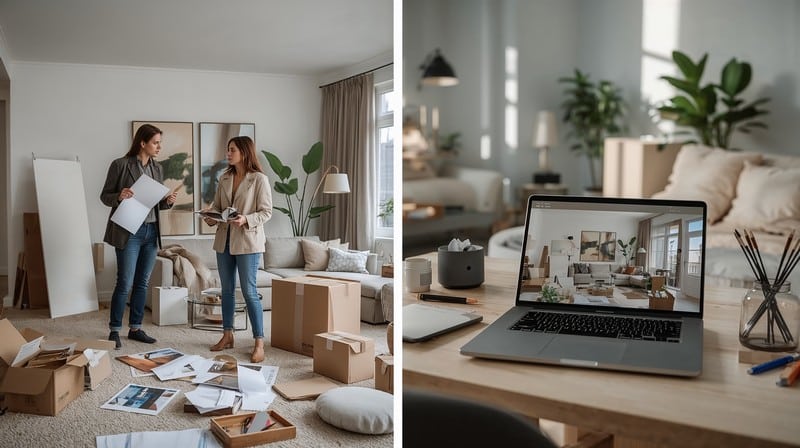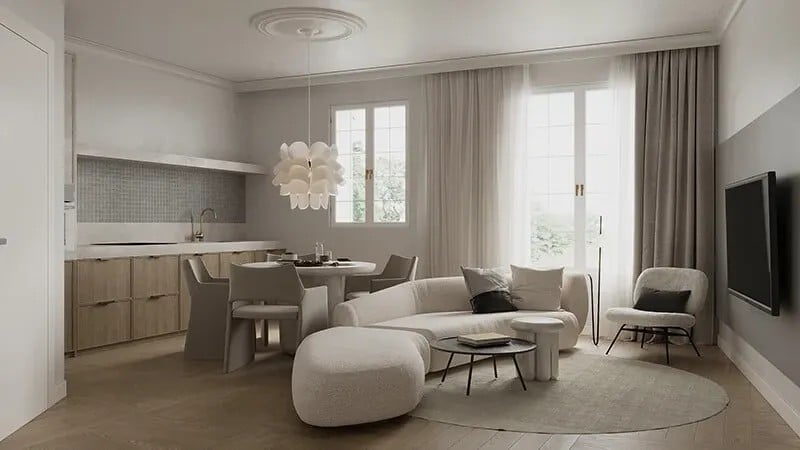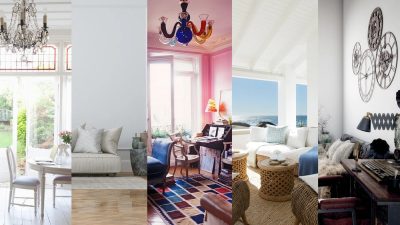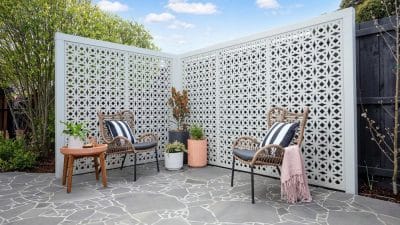
Discover how artificial intelligence is revolutionizing home design by making professional-quality interior design accessible, affordable, and incredibly efficient for every homeowner.
In just a few short years, the field of interior design has changed dramatically. What traditionally took large budgets, timelines of consultations, and weeks of discussions with a professional interior designer can now be done in hours – sometimes minutes – thanks to amazing AI technology.
If you have often wanted help to redesign your home but were overwhelmed with the costs, or difficulty hiring a traditional interior designer, don’t be concerned; you’re not alone. Between $2,000 to $12,000 is the average amount that the homeowner spends in professional interior design, with luxury projects exceeding $50,000. But what if you were able to afford better and get the same, if not better, results at a smarter price?
Enter the AI interior designer-a game-changing technology that’s democratizing beautiful home design for everyone, regardless of budget or experience level.
The Rise of AI in Interior Design
Artificial intelligence has stealthily transformed the practices of many different industries, including interior design. Contemporary AI interior designer applications use complex algorithms, enormous libraries of design knowledge, and exceptional visualizations to provide results that can compete with – or even exceed – the outcomes of conventional design techniques.
The new generation of AI interior designers does more than just visualize a predetermined template with basic design patterns. Even traditional design software does not understand spatial relationships, color theory, lighting, or cultural design preferences. Contemporary AI design software understands and can even analyze your existing space, what style of design you prefer, and can produce many design options that fit your style and budget.
How AI Interior Designers Actually Work
The technology behind AI interior design is surprisingly sophisticated yet refreshingly simple to use. Here’s what happens when you engage with an AI interior designer:
Image Analysis: Advanced computer vision analyzes your room photos, identifying architectural features, existing furniture, lighting conditions, and spatial dimensions with remarkable accuracy.
Style Recognition: Machine learning algorithms trained on millions of design images can instantly recognize and categorize different design styles, from minimalist Scandinavian to maximalist bohemian.
Preference Learning: As you interact with the AI, it learns your preferences, noting which designs you love, which elements you dislike, and how you want to use your space.
Solution Generation: The AI generates multiple design options, each respecting your space’s constraints while incorporating your style preferences and budget requirements.
Modern platforms like Paintit.ai have revolutionized this process by making it as intuitive as selecting tracks on a music playlist. Users simply upload photos of their space, scroll through curated design styles, and watch their room transform in real-time with furniture recommendations and color schemes that perfectly match their vision.
The Time-Saving Revolution
Traditional interior design projects follow a predictable timeline that can stretch for months:
- Initial consultation: 1-2 hours
- Space measurement and analysis: 2-4 hours
- Design development: 2-4 weeks
- Revisions and refinements: 1-3 weeks
- Final presentation and shopping list: 1-2 weeks
- Implementation coordination: Ongoing
Total time investment: 2-4 months minimum
Compare this to an AI interior designer workflow:
- Photo upload and brief: 5 minutes
- AI analysis and initial designs: 30 seconds to 2 minutes
- Design exploration and refinement: 30-60 minutes
- Final design selection and shopping list: 15 minutes
Total time investment: 1-2 hours maximum
This striking time compression is not only a score for convenience; it is also crucial for sustaining momentum in the design project. How many fabulous renovation ideas have simply withered on the vine because the process took too long and lost its enthusiasm?
The most sophisticated AI platforms can now produce photorealistic renderings in under 12 minutes, meaning homeowners could see exactly what their space will look like with new furniture, other paint colours or completely new layouts. Ultimately, this kind of instant visualization removes the guesswork that has historically been associated with home renovation projects.
The Money-Saving Benefits
The financial advantages of AI interior designers extend far beyond simply avoiding designer fees. Let’s break down the comprehensive cost savings:
Direct Cost Comparisons
Traditional Interior Designer Costs:
- Initial consultation: $150-$500
- Design development: $75-$200 per hour (20-40 hours typical)
- Project management: $50-$150 per hour (10-20 hours typical)
- Shopping and sourcing: 10-30% markup on all purchases
- Total professional fees: $3,000-$15,000+ for a typical room
AI Interior Designer Costs:
- Subscription or per-project fee: $10-$50 per month
- No hourly charges
- No markups on purchases
- Total professional fees: $50-$200 for unlimited designs
Hidden Savings That Add Up
Mistake Prevention: AI interior designers provide accurate spatial visualizations, dramatically reducing costly furniture and decor mistakes. The average homeowner makes $500-$2,000 worth of sizing or style errors per room renovation.
Budget Optimization: AI tools can instantly show you how different budget allocations affect your final design, helping you invest in high-impact changes while saving on less visible elements.
Comparison Shopping: Many AI platforms integrate with multiple retailers, automatically finding the best prices for recommended items-savings that typically range from 15-40% compared to designer-sourced pieces.
No Minimum Project Requirements: Traditional designers often require minimum project values of $5,000-$25,000. AI interior designers work equally well for a $500 refresh or a $50,000 renovation.
The integration of real furniture suggestions with AI-generated designs means homeowners can immediately see accurate pricing for their desired look, eliminating the surprise costs that often derail traditional design projects.
Where AI Interior Designers Excel
Modern AI interior designers have developed remarkable capabilities that make them incredibly effective for many design challenges:
Style Exploration and Discovery
AI can now show you all the possibilities for your space instantly in dozens of styles so you can find the styles you prefer, some you have never even thought of. This would normally involve meeting with multiple designers, going through their mood boards and trying to envision your space in that designer’s style.
For the most part, the most natural platform will let you see everything from the coziness of a Scandinavian aesthetic to a gritty industrial loft, and you get to see it happen instantly, without spending the thousands of dollars on consultation and furniture.
Spatial Problem-Solving
AI excels at optimizing challenging spaces-from tiny apartments to awkwardly shaped rooms. The algorithms can generate layout solutions that maximize functionality while maintaining aesthetic appeal, often finding creative solutions that human designers might miss.
Color and Material Coordination
AI interior designers can instantly test thousands of color and material combinations, ensuring perfect coordination across all elements in your room. This eliminates the guesswork and potential mistakes that often plague DIY design efforts.
Budget-Conscious Design
AI platforms excel at working within specific budget constraints, automatically suggesting alternatives when your preferred items exceed your budget. This real-time budget optimization is virtually impossible with traditional design methods.
Understanding the Limitations
While AI interior designers offer remarkable capabilities, it’s important to understand their current limitations:
Creativity and Innovation
AI excels at applying established design principles but may struggle with truly innovative or unconventional solutions. If you’re seeking a completely unique, boundary-pushing design, human creativity might be irreplaceable.
Complex Architectural Projects
Major renovations involving structural changes, electrical work, or plumbing modifications require human expertise and often professional licensing. AI interior designers work best with furniture, décor, color, and layout changes.
Personal Nuance and Emotion
While AI can learn your preferences, it may miss subtle emotional or personal elements that make a space truly feel like home. A human designer might notice that you linger near family photos or prefer certain lighting conditions that AI could overlook.
Local Knowledge and Resources
Human designers often have relationships with local craftspeople, exclusive access to certain products, or knowledge of regional design trends that AI platforms haven’t yet incorporated.

Choosing the Right AI Interior Designer
Not all AI interior designer platforms are created equal. Here’s what to look for:
Essential Features
Photo-Based Analysis: The AI should work from photos of your actual space, not just generic room templates.
Style Variety: Look for platforms offering diverse style options, from traditional to contemporary to eclectic.
Budget Integration: The best AI designers incorporate budget constraints into their recommendations.
Shopping Integration: Platforms that connect directly to retailers save time and ensure product availability.
Iteration Capability: You should be able to easily modify and refine designs based on the AI’s initial suggestions.
Premium Features Worth Considering
3D Visualization: Advanced platforms offer photorealistic 3D renderings that help you truly envision the final result.
Augmented Reality: Some AI tools let you virtually “place” furniture in your real space using your smartphone camera.
Professional Integration: Hybrid platforms that combine AI efficiency with human designer oversight when needed.
Project Management: Tools that help coordinate purchases, deliveries, and implementation timelines.
The most user-friendly platforms prioritize empathy, intuitiveness, and seamlessness-caring about your preferences rather than forcing pre-made templates, ensuring every function is as simple as picking a track on a music app, and merging the entire design process without requiring re-uploads or complex steps.
Making AI Interior Design Work for You
To maximize the benefits of AI interior designer tools, consider these strategies:
Preparation Tips
Take Quality Photos: Good lighting and multiple angles help the AI better understand your space.
Define Your Goals: Be specific about how you want to use the space and what problems you’re trying to solve.
Set Realistic Budgets: Include both your ideal budget and your absolute maximum to give the AI flexibility.
Gather Inspiration: Having some reference images helps the AI understand your style preferences more quickly.
Working with AI Recommendations
Start Broad, Then Narrow: Begin with general style explorations before focusing on specific pieces.
Question Everything: Don’t accept the first design-explore alternatives and ask “what if” questions.
Mix AI and Human Input: Use AI for efficiency, but don’t hesitate to inject your personal preferences and modifications.
Plan Implementation: Even with perfect designs, successful execution requires planning and coordination.
Getting Started with AI Interior Design
Ready to experience the future of interior design? Here’s your step-by-step guide:
- Choose Your Platform: Research AI interior designer tools that match your needs and budget.
- Document Your Space: Take clear, well-lit photos from multiple angles.
- Define Your Vision: Gather inspiration images and clarify your functional requirements.
- Set Your Budget: Be realistic about what you can spend on the actual implementation.
- Explore and Iterate: Don’t settle for the first design-explore multiple options and variations.
- Plan Implementation: Create a timeline for purchases and room changes.
- Execute Thoughtfully: Implement changes gradually to ensure each element works as intended.
Conclusion: Your Design Journey Awaits
AI interior design isn’t coming-it’s here. In an era when remotely hiring a professional designer has virtually become a hazard due to rising transportation costs, high demand, and our collective schedules, it’s no wonder homeowners are turning to AI interior designer tools to renovate an entire interior space or a single room like the dining room or bathroom. Nowhere else can you find the quality of professional design, at an affordable price, faster than using AI interior designer tools.
The question is- can AI replace traditional interior design in every instance? Of course not. The question is- can AI help you accomplish your design objectives faster and cheaper than traditional methods? For most homeowners, absolutely!
Your dream home is easier to realize than you think. With AI interior designer tools, it’s absolutely possible to create one that’s practical, affordable and very enjoyable!








